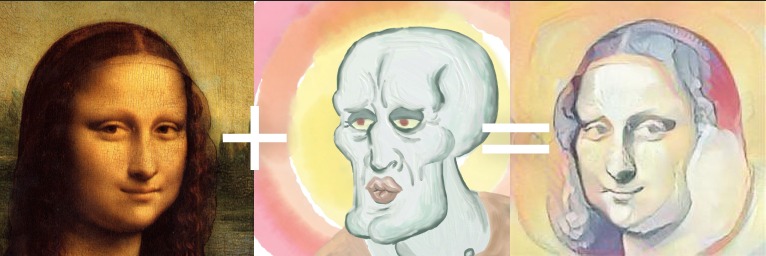FuncAI is a high performance, state of the art machine learning library for PHP.
It has no dependencies and can run everywhere PHP can run.
Apply the style of one image to another image.
- Generating artistic versions of user provided images
- Ensuring a consistent style of cover images
- For anonymizing avatars
Find out what's in an image. Returns the top 5 classes out of a list of 21.825 classes.
- Making your images searchable by content
- Automatically generating image names or alt attributes
- Grouping your images by content
- Image recognition - Get a label for a given image (in progress)
- Image upscaling - Increase the size of your images (in progress)
- Sentiment analysis - Find out if a user generated text is positive or negative (in progress)
- Time series forecasting - Predict what will happen in the future based on past events (planned)
- Text summary - Generate a summary from a given text (in progress)
- Translation - Translate your text from one language to another (planned, https://ai.googleblog.com/2017/04/introducing-tf-seq2seq-open-source.html, https://huggingface.co/facebook/mbart-large-50-many-to-many-mmt, https://google.github.io/seq2seq/nmt/)
If you have a usecase that's not listed above, please create an issue and explain what you would like to do.
- Runs everywhere - You only need PHP, nothing else
- Super simple API - No machine learning knowledge required
- Many applications - Wide range of machine learning applications ready to use
1. Install the package via composer:
composer require funcai/funcai-php
php vendor/funcai/funcai-php/install.php
This downloads tensorflow to ./tensorflow.
php vendor/funcai/funcai-php/install-stylization.php
This downloads the stylization model to ./models
You will need to move the models folder to a permanent location.
For example, move it to /var/www/models on your server. In that case make sure to set the base path accordingly:
\FuncAI\Config::setModelBasePath('/var/www/models');
You can also move the folder directly into your project and check them into git, but the folder might get quite big (100 Mb up to multiple Gb).
After you've completed the installation steps you can run your first prediction:
\FuncAI\Config::setLibPath('./tensorflow/'); // This should point to the path from step 2
\FuncAI\Config::setModelBasePath('./models'); // This should point to the path from step 4
$model = new \FuncAI\Models\Stylization();
$model->predict([
__DIR__ . '/sample_data/prince-akachi.jpg',
__DIR__ . '/sample_data/style.jpg',
]);
This will output the stylized image to ./out.jpg.
- PHP >= 7.4 on Linux
todo
- Pick the correct tasks (easy for computer, hard / repetitive for humans)
- Responsibility (https://www.tensorflow.org/responsible_ai)
- Uncertainty
- Specific tasks
- Run
docker-compose up -d - Run
docker-compose exec app bash - Run
php example.php
- Uses FFI to talk to tensorflow for predictions
- Uses a custom written c++ program for training (in progress)
- Currently runs on linux with CPU support
- Fix path of libtensorflow.so in tf_singlefile.h
- Find a better way to download/host models
- Check for memory leaks
Install Docker.
To be able to run the example file you need to run the following docker command which will download the efficientnet model and save it in the correct file format:
docker run -it --rm -v $PWD:/code -w /code tensorflow/tensorflow:2.3.0 python scripts/generate/efficientnet.py
Alternatively, if you already have python3 installed you can directly run:
pip3 install tensorflow
python3 scripts/generate/efficientnet.py
To start the provided Docker container which provides you with a working php7.4 installation run:
docker-compose up -d
Afterwards run:
docker-compose exec app bash
to get a Terminal inside of the docker container.
Alternatively you can setup a PHP 7.4 environment locally and use that.
Go to your settings and open "Languages & Frameworks -> PHP -> PHP Runtime -> Others". Make sure "FFI" is checked.


